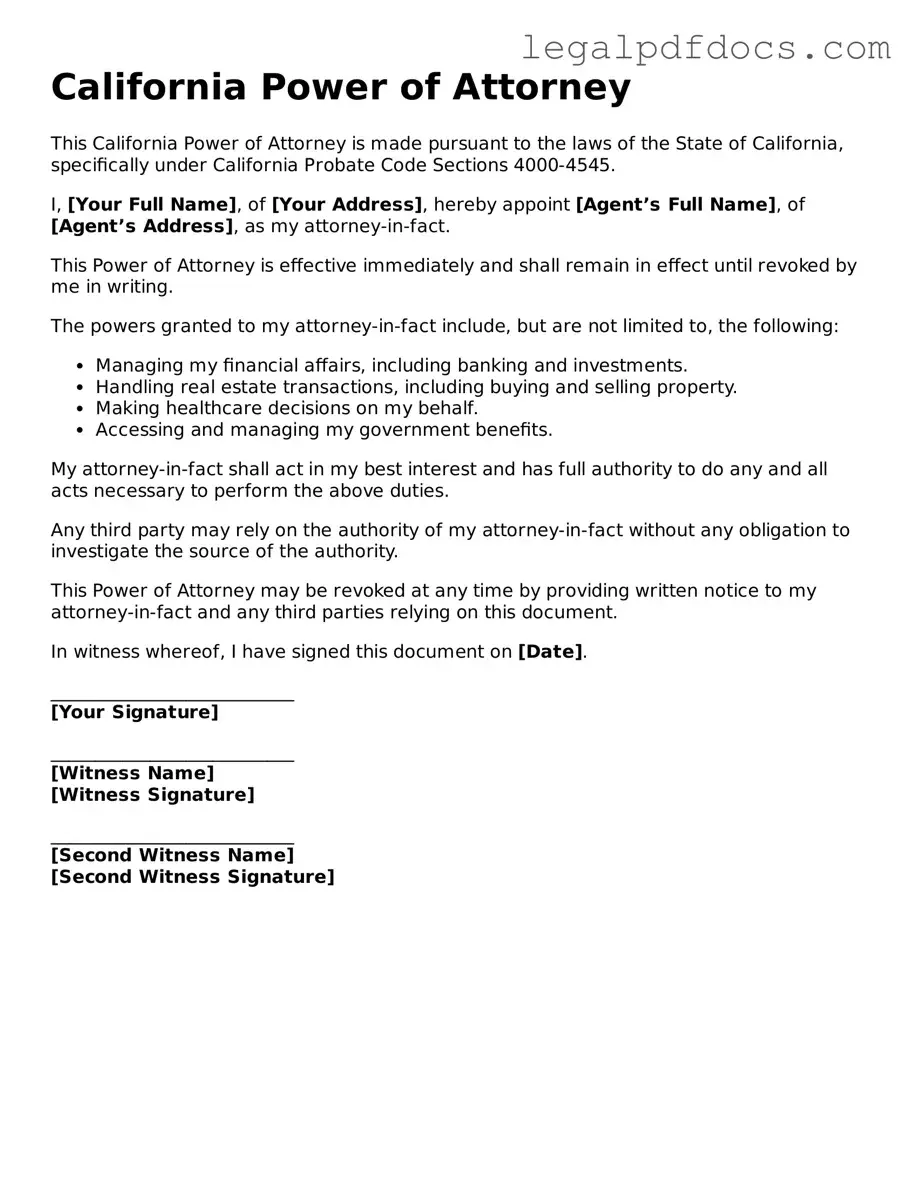Official Power of Attorney Form for California
The California Power of Attorney form is a legal document that allows an individual to designate another person to make decisions on their behalf. This form can cover financial matters, healthcare decisions, or both, depending on the type chosen. Understanding its importance is crucial for anyone looking to ensure their wishes are honored when they are unable to communicate them.
Ready to take control of your future? Fill out the Power of Attorney form by clicking the button below.
Open Power of Attorney Editor Here
